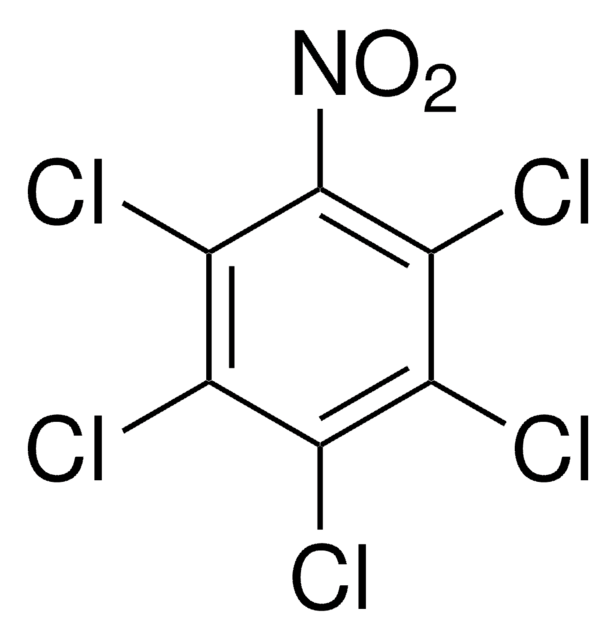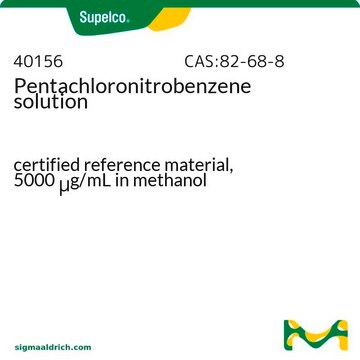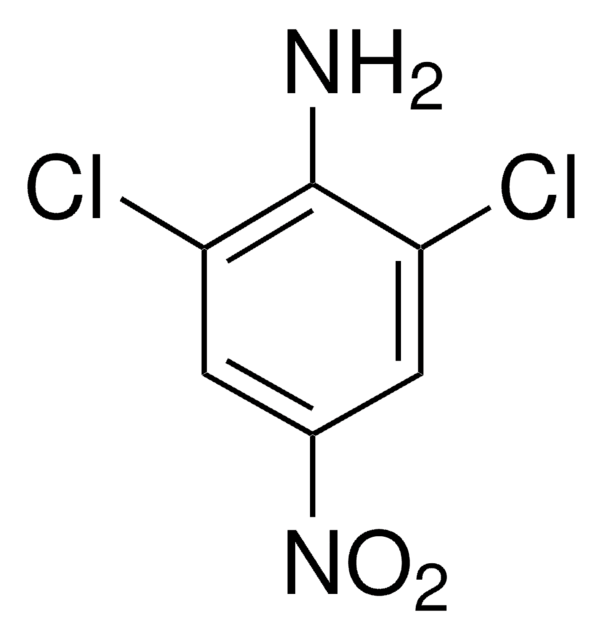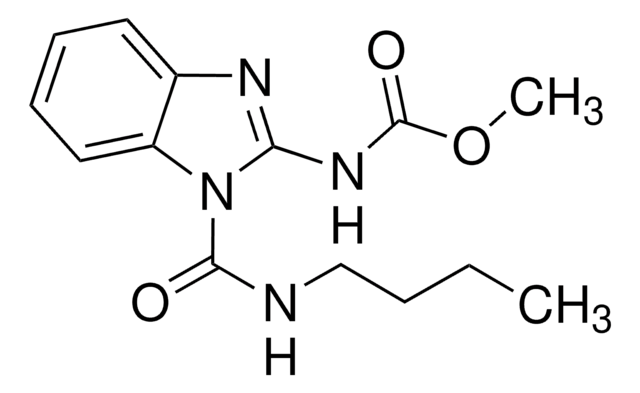P2205
Pentachloronitrobenzene
≥94%
Synonym(s):
PCNB, Quintozene
About This Item
Recommended Products
Quality Level
assay
≥94%
95%
mp
140-143 °C (lit.)
SMILES string
[O-][N+](=O)c1c(Cl)c(Cl)c(Cl)c(Cl)c1Cl
InChI
1S/C6Cl5NO2/c7-1-2(8)4(10)6(12(13)14)5(11)3(1)9
InChI key
LKPLKUMXSAEKID-UHFFFAOYSA-N
Looking for similar products? Visit Product Comparison Guide
Related Categories
Application
<li><strong>Pentachloronitrobenzene Environmental Impact:</strong> Pentachloronitrobenzene (PCNB) is an organochlorine fungicide widely used for seed and soil treatments to control various fungal pathogens and also disrupts murine ventricular wall development by inhibiting cardiomyocyte proliferation, highlighting its significant biological impact and raising concerns about its environmental safety (Gao et al., 2024).</li>
</ul>
signalword
Warning
hcodes
Hazard Classifications
Acute Tox. 4 Oral - Aquatic Acute 1 - Aquatic Chronic 1 - Skin Sens. 1
Storage Class
11 - Combustible Solids
wgk_germany
WGK 2
flash_point_f
Not applicable
flash_point_c
Not applicable
ppe
dust mask type N95 (US), Eyeshields, Faceshields, Gloves
Choose from one of the most recent versions:
Certificates of Analysis (COA)
Don't see the Right Version?
If you require a particular version, you can look up a specific certificate by the Lot or Batch number.
Already Own This Product?
Find documentation for the products that you have recently purchased in the Document Library.
Customers Also Viewed
Our team of scientists has experience in all areas of research including Life Science, Material Science, Chemical Synthesis, Chromatography, Analytical and many others.
Contact Technical Service












